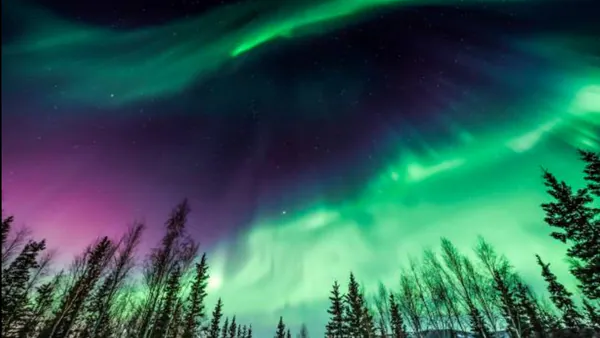
Northern Lights To Dazzle Skies Across These US States Tonight - From Washington To Vermont To Maine
According to the National Oceanic and Atmospheric Administration (NOAA), two coronal mass ejections (CMEs) are expected to strike Earth late on Monday, potentially triggering strong (G3) geomagnetic storm conditions. A third and even more powerful CME is also forecast to follow.
This third burst, caused by a massive X5.1-class solar flare - the most powerful recorded so far in 2025 - is predicted to reach Earth at around 7 a.m. EST (12:00 GMT) on 12 November.
Also Read | California Northern Lights Tracker: How to watch stunning aurora displayIn response, NOAA has issued a G4 geomagnetic storm watch, suggesting the potential for widespread auroras visible much farther south than usual. While cloudy skies obscured the view for many last week, weather conditions this time are expected to be more favourable.
Which US states could see the Northern Lights tonight?If you're wondering,“from where can I see the northern lights?” NOAA's latest aurora forecast map has the answer. According to the agency, the Northern Lights could be visible across at least 21 US states.
States expected to catch a glimpse of the aurora include Alaska, North Dakota, Minnesota, Montana, Wisconsin, Michigan, Maine, South Dakota, Idaho, Vermont, Washington, New Hampshire, Wyoming, New York, Iowa, Massachusetts, Pennsylvania, Nebraska, Ohio, Illinois, and Indiana.
This means that even residents in parts of the Midwest and Northeast could enjoy the stunning display if skies remain clear.
Also Read | Spectacular auroras may light up US skies tonight: Which states can see them? When is the best time to watch the aurora borealis in the US?NOAA's three-day geomagnetic storm forecast suggests that heightened activity will continue through the night. The best viewing times are expected to be:
4 p.m. – 10 p.m. EST (2100–0300 GMT): Minor (G1) to moderate (G2) storm levels possible
10 p.m. – 1 a.m. EST (0300–0600 GMT): Strong (G3) geomagnetic storm levels possible
During these peak hours, the Northern Lights could appear as glowing ribbons, arcs, or soft clouds of colour drifting across the northern horizon.
Also Read | In Pics: Aurora Borealis sighting across the Northern US How can you improve your chances of seeing the Northern Lights?Even if you're not in an ideal location, a few simple techniques recommended by space can help you spot or photograph the aurora more easily:
Find a dark spot facing north: Move as far away from city lights as possible and look toward the northern horizon for the best chance of seeing the aurora borealis.
Use your phone camera: Your camera sensor can often detect faint auroras before your eyes do. Try scanning the sky through your camera to locate the right direction.
Let your eyes adjust: Spend at least 30 minutes in darkness to develop night vision.
Dress warmly: Temperatures can drop quickly at night, and aurora watching often involves standing outdoors for long periods.
Be patient: The Northern Lights can appear suddenly, so staying out a little longer might make all the difference.
Which apps can help track aurora activity?To stay updated in real time, space recommends downloading a Northern Lights forecast app that provides alerts based on your location, such as My Aurora Forecast & Alerts or Space Weather Live, both available on iOS and Android.
These apps can notify you when the aurora visibility index spikes in your area - ensuring you don't miss the show when it begins.
Legal Disclaimer:
MENAFN provides the
information “as is” without warranty of any kind. We do not accept
any responsibility or liability for the accuracy, content, images,
videos, licenses, completeness, legality, or reliability of the information
contained in this article. If you have any complaints or copyright
issues related to this article, kindly contact the provider above.


















Comments
No comment